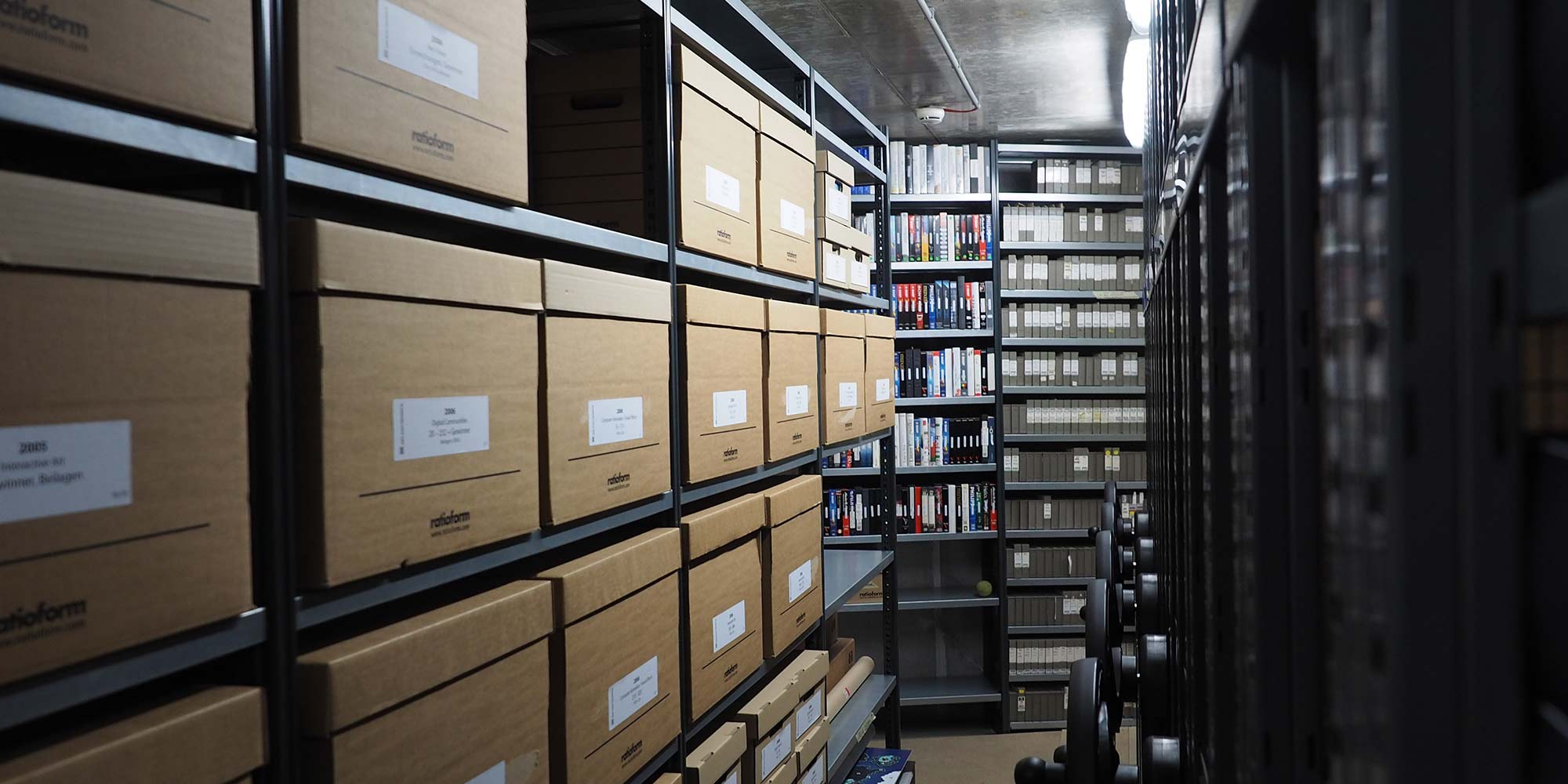Since 1979, the Ars Electronica Archive has been one of the world’s most comprehensive collections of digital media art. It includes contributions by artists from the Ars Electronica Festival and the Prix Ars Electronica, as well as materials from the Ars Electronica Futurelab, the Ars Electronica Center and other areas of Ars Electronica. Parts of the collection are publicly accessible through digitization projects.
Further collections

About the Ars Electronica Archive
Learn more about the Ars Electronica Archive, what it collects and preserves, that it exists as a digital but also as an “analog” form and which projects the archive has already realized.








